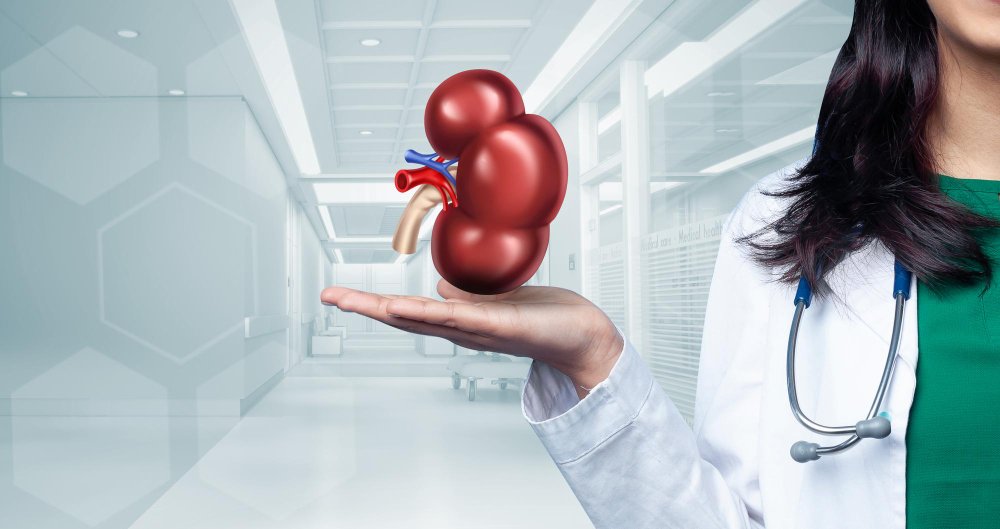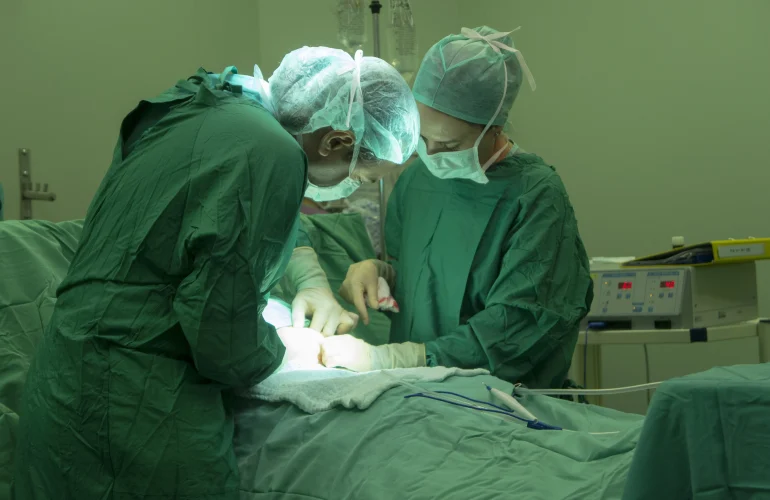Why Go Through A Pain, When Simple Drinking Enough Water & Lifestyle Modifications, Can Prevent You From Kidney Stones?
Ah! My Stomach is paining too much, can’t move or do anything. A kidney stone that’s still in your kidney may cause sharp, intense pain in your side or back. It’s often felt just below your ribcage. As the stone moves from your kidney into your urinary tract, the pain might feel more like a radiating ache in the lower abdomen, pelvis, or groin.
Kidney stones are common across the world, with a prevalence of about 12% worldwide. Kidney stone disease affects approximately one in every 500 individuals in the United States each year. Their prevalence in India also reflects worldwide prevalence and stands at approximately 12% and is relatively more common in the northern part of India, where it is 15%. Over a lifetime, 1 in 8 men (peak incidence of 40-60 years) and 1 in 16 women (peak incidence 20-50 years) will develop this disease.
Urinary stones are the third most common affliction of the urinary tract. They are exceeded only by urinary tract infections and pathologic conditions of the prostate. The lifelong prevalence of kidney stone has increased throughout the 20th century. The incidence of new cases and recurrences continue to rise.
Dr Hrushikesh Vaidya, Medical Director and Chairman Horizon Group of Hospitals said “Each year, more than one million Indians are detected with kidney stone problems. The kidney is one of the vital organs of the body. It is constantly at work to remove all the waste and fluid particles from your body in the form of urine. Thus when the kidney stops functioning, waste matters begin to circulate with the blood and hamper the other organs”.
Dr Hrushikesh Vaidya further added “Since all humans have kidney, everyone has the potential to get stones at some point in life. However, the risk factor is higher for some people compared to that of others. For instance, statistics indicate that men have a higher probability of getting kidney stones than women. Further, people belonging to a particular geographic location, or with specific food habit or from particular gene pools also have a higher risk of stone formation”.
Dr Ria Vaidya, CEO, Horizon Group of Hospitals said “Kidney stones are increasing among younger generations due to lifestyle choices. One out of every five adults has chronic kidney disease. Adopting healthier habits, such as hydration and a balanced diet, can prevent kidney-related issues. The message is loud and clear. Drink plenty of fluids. Light-coloured and clear urine signifies proper hydration. A good idea would be to carry at least two bottles of water to your workplace. Citrus fruits and drinks also help in the cause.”
Dr Vivek Jadhav, Leading Urologist and Consultant Horizon Prime Hospital said “When it comes to kidney stones, there are many misconceptions. People often think that the kidney stones occur only in elderly people. Kidney stones are a common ailment that can cause severe pain. They are formed when there is an excess of certain minerals in the urine. The most common type of kidney stone is calcium oxalate. Other types include uric acid, struvite, and cystine. Kidney stones often go undiagnosed because they do not always cause symptoms. Kidney stones can cause excruciating pain and even lead to serious health complications if not treated appropriately”.
Symptoms
The most common symptoms are severe pain in the abdomen, back, or side, which can come and go as the stone moves through the urinary tract.
- Blood in the urine
- Nausea
- Vomiting
- Fever and chills
Causes
- Family history of kidney stone.
- Insufficient intake of water over a prolonged duration.
- High protein and sodium diets.
- High sugar intake.
- Gastric or intestinal surgery.
- Cysts in the kidney and related diseases.
- Intake of certain medicines.
- Irritation in the bowel or tendency of swelled joints.
- A high amount of oxalate, uric acid, calcium and cysteine in the urine.
- People who have had kidney stones in the past are also at high risk. This is because there is always a chance of re-accumulation of the stones even after surgery.
Diagnosis
- Blood tests to check the level of certain chemicals
- Urine tests
- X-ray of the lower abdomen area
- CT scan
- Types of Kidney Stones
- Kidney stones come in four primary types
Calcium stones: The most prevalent type, calcium stones can be categorised into two subgroups, depending on the specific molecules they are composed of Calcium oxalate and Calcium phosphate
Uric acid stones: Another common type of kidney stone, which forms when there’s an excess of uric acid in the urine.
Struvite stones: Also known as triple phosphate or magnesium ammonium phosphate stones, they tend to develop due to urinary tract infections.
Cystine stones: These rare stones occur due to a genetic condition where the kidneys excrete too much cystine, an amino acid.
Treatments
Treatments are generally determined by the size of the stones.
- Small Kidney Stones
- You can keep your urine diluted by drinking up to 4 litres of water each day
- Taking pain relievers may help you to endure pain until the stone dissolves
- Medicines
- Large Kidney Stones
Shock-wave lithotripsy: Sound waves are used to break stones into small pieces that are then excreted through the urine. This involves inserting a tiny camera and tools into the urinary tract to remove the stone. The procedure is typically conducted under sedation.
Surgery: Surgery may sometimes be necessary to remove a large kidney stone. This is typically only done in cases where other treatments have failed or when there is a risk of severe complications from the stone. The doctor may recommend surgery if the kidney stones are large or painful, obstruct urine flow, cause bleeding or infection, are trapped in the ureter or in the tubes which convey urine from the kidneys to the bladder, or include any combination of these factors. Among the most common kidney stone treatments in India are Retrograde Intrarenal Surgery and Mini Percutaneous Nephrolithotomy.
Prevention
- Stay hydrated throughout the day
- Ensure that you consume fewer foods containing oxalate, which may contribute to calcium oxalate stones.
- Reduce your intake of animal protein and follow a low-salt diet.
Conclusion
When it comes to kidney stones, the best offence is a good defence. That means drinking plenty of fluids and eating a healthy diet with low sodium and animal protein. If there are any symptoms of kidney stones, such as severe pain in your side or back, blood in your urine, or difficulty urinating, it’s essential to see a doctor immediately. As we have seen, there are many potential risk factors for developing kidney stones, but by making some lifestyle changes and being aware of these risks, it can be prevented. If one thinks that there is a risk of developing kidney stones, one should talk to a doctor and undergo the advised tests. Our team of experienced doctors and nurses at Horizon Prime Hospital offers one of the best Kidney Stone Treatment in Thane to help patients manage their kidney stones effectively. We’re committed to providing you with the best care and solutions to kidney stone problems, ensuring your comfort and well-being.




